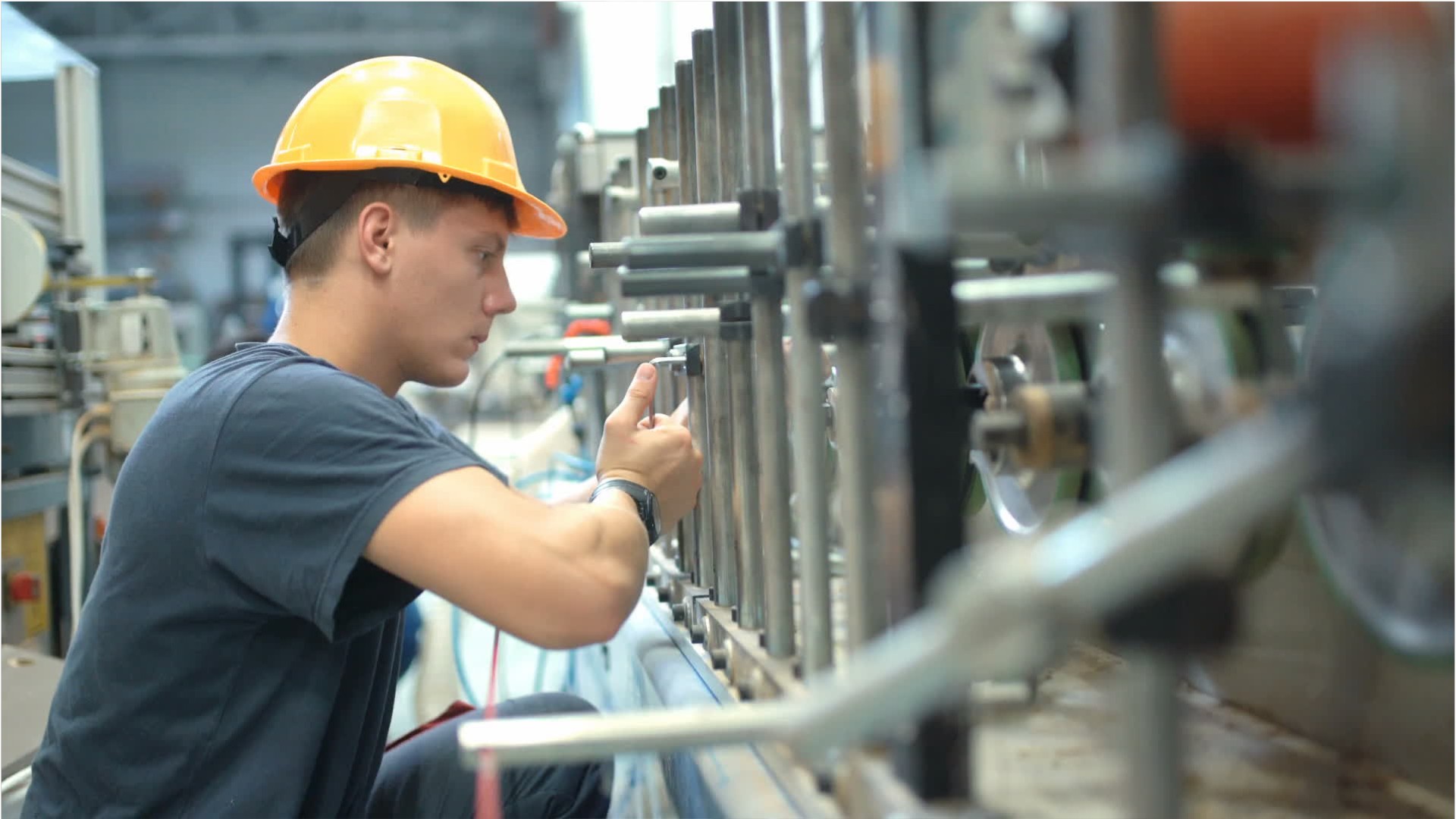Industrial Machinery Mechanics
Industrial Machinery Mechanic, Maintenance Technician, Mechanic, Overhauler
 Select a military branch to see samples.
Select a military branch to see samples.
Aerospace Ground Equipment; Airlift/Special Mission Aircraft Maintenance Apprentice, C-130/C-27J; Airlift/Special Mission Aircraft Maintenance Journeyman, C-5; Heavy Aircraft Integrated Avionics Apprentice; Helicopter/Tiltrotor Aircraft Maintenance Craftsman; Missile And Space Systems Maintenance; Refuel/Bomber Aircraft Maintenance; Refuel/Bomber Aircraft Maintenance Helper, B-52; Remotely Piloted Aircraft Maintenance Craftsman; Tactical Aircraft Maintenance
Air and Missile Defense (AMD) Systems Technician; Allied Trades Specialist; Armament Systems Maintenance Warrant Officer; BRADLEY Fighting Vehicle System Maintainer; Engineer Equipment Maintenance Warrant Officer; Maintenance Supervisor; Prime Power Production Specialist; Self Propelled Artillery Systems Mechanic; Small Arms/Towed Artillery Repairer; UH-60 Helicopter Repairer/Aircrew Member
Aviation Maintenance Technician; Avionics Electrical Technician; Electrician's Mate; Machinery Technician; Marine Safety Specialist Engineer; Naval Engineering Specialty
Aircraft Power Plants Test Cell Operator; Artillery Systems Technician; Assault Amphibious Vehicle (AAV)/Assault Combat Vehicle (ACV) Repairer/Technician; Cryogenics Equipment Operator; Expeditionary Airfield Systems Technician; Ground Ordnance Weapons Chief; Light Armored Vehicle (LAV) Repairer/Technician; Machinist; Maintenance Management Specialist; Ordnance Officer
Advance Seal Delivery System Maintainer; Auxiliary Equipment Technician; Aviation Fuels Shore Base Operations Technician; Diesel Engine Systems Maintainer; Gas Turbine Mechanical Systems Maintainer; LAMPS MK III RAST Mechanical Maintenanceman; LPD 17 Class Engineering Control System (ECS) Master Maintenance Technician; MCM Propulsion Technician; Navy Afloat Maintenance Training Strategy (NAMTS) Submarine Auxiliaryman Pump Repair Technician; Steam Plant Auxiliary Systems Maintainer
No similar titles were found.
What they do:
Repair, install, adjust, or maintain industrial production and processing machinery or refinery and pipeline distribution systems. May also install, dismantle, or move machinery and heavy equipment according to plans.
On the job, you would:
- Repair or maintain the operating condition of industrial production or processing machinery or equipment.
- Repair or replace broken or malfunctioning components of machinery or equipment.
- Clean, lubricate, or adjust parts, equipment, or machinery.
Knowledge
Engineering and Technology
- mechanical
- product and service development
Arts and Humanities
- English language
Manufactured or Agricultural Goods
- manufacture and distribution of products
Math and Science
- arithmetic, algebra, geometry, calculus, or statistics
Skills
Basic Skills
- thinking about the pros and cons of different ways to solve a problem
- figuring out how to use new ideas or things
Technical
- figuring out what is causing equipment, machines, wiring, or computer programs to not work
- planning and doing the basic maintenance on equipment
Problem Solving
- noticing a problem and figuring out the best way to solve it
Abilities
Hand and Finger Use
- hold or move items with your hands
- put together small parts with your fingers
Controlled Movement
- quickly change the controls of a machine, car, truck or boat
- use your arms and/or legs together while sitting, standing, or lying down
Ideas and Logic
- notice when problems happen
- order or arrange things
Hearing and Speech
- tell the difference between sounds
Personality
People interested in this work like activities that include practical, hands-on problems and solutions.
They do well at jobs that need:
- Cautiousness
- Attention to Detail
- Dependability
- Perseverance
- Integrity
- Stress Tolerance
Technology
You might use software like this on the job:
Spreadsheet software
- Microsoft Excel
Presentation software
- Microsoft PowerPoint
Industrial control software
- KEYENCE PLC Ladder Logic
- Supervisory control and data acquisition SCADA software
Education
Education: (rated 3 of 5)
certificate after high school or
high school diploma/GED
usually needed
high school diploma/GED
usually needed
Job Outlook
Bright
New job opportunities are very likely in the future.
Explore More
- Electric Motor, Power Tool, & Related Repairers
- Engine & Other Machine Assemblers
- Maintenance Workers, Machinery
- Mobile Heavy Equipment Mechanics
- Multiple Machine Tool Setters, Operators, & Tenders, Metal & Plastic
You might like a career in one of these industries:
See more details at O*NET OnLine about Industrial Machinery Mechanics.





